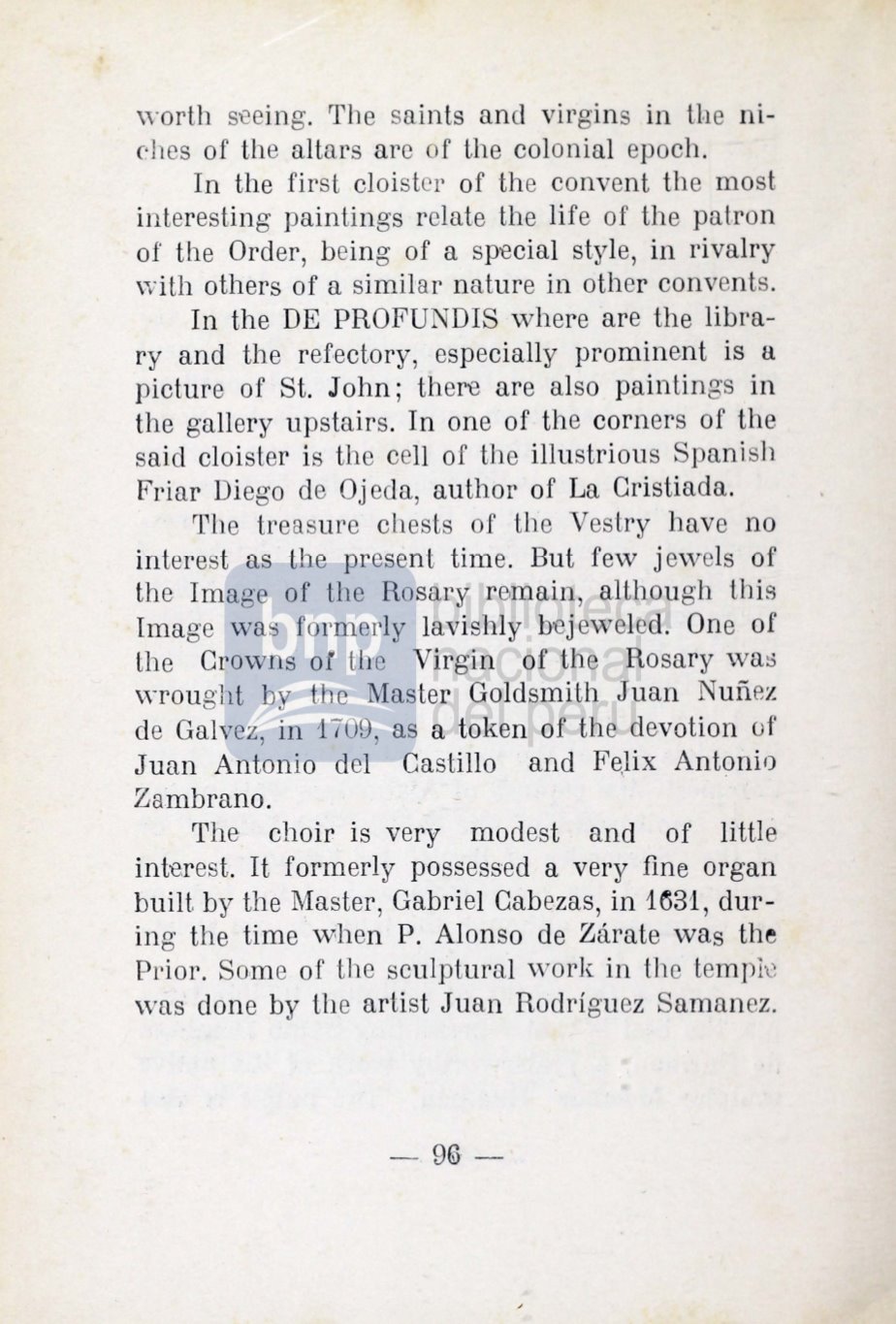

\Yorth s ') ing. Th
saints and vir
0
ins in th n1-
ch s of th altars are
f
the colonial ep ch.
In the first cloist r of the convent th mo
t
i1
teresting paintings r elate the lif of
tl
e palr n
of the Order, being of a special style, in rivalry
\vith others of a simil ar nature in other conv nt .
In the DE PROFUNDIS where are the libra–
ry and the ref.ectory, especially prominent is a
picture of St.
J
ohn; there are also paintings in
the gallery upstairs. In one of the corners of the
said cloister is the cell of the illustrious Spani h
Friar Diego de Oj eda, author of La Cristiada.
The treasu re chests of the Vestry have no
interest as th
present time. But few
j
ew Is of
the Imag of the Ro a
"Y
re ain, although this
Image wa
íl'me
ly la i h y bej eweled. One of
the
c
Ov
ns
of
e
v·
rgin of
tbe
Rosary wa:5
V\Toug~it
y the Ma ter Gold mith Juan Nuñez
de Galvez,
·n
17
9, a a to en of the devotion of
Juan Antonio del Castillo
and Fe.Iix Ant9nio
Za.mbrano.
The
choir is very modest
and
of
little
interest. It formerly possessed a very fine organ
built by the Master, Gabriel Cabezas, in
1~31,
dur–
ing the time when P. Alonso de Zárate was the
Pr ior. Saime of the sculptural work in the temph:
\vas done by the artist Juan Rodríguez Samanez.
-
963- -
















